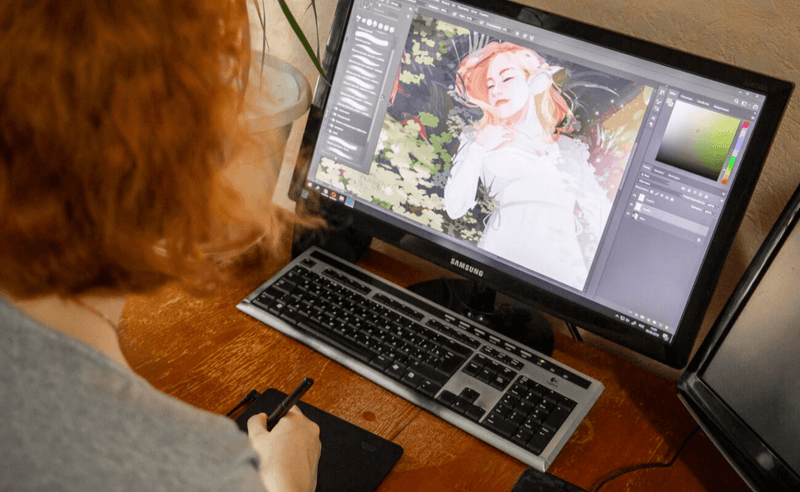As part of our series of articles about Derwent’s pencil range artist Rosie Wallace shares this step by step tutorial to create a stunning cat’s eye. Rosie has used Derwent’s new beginner pencil range ‘Chromaflow’ which blend beautifully on Saunders Waterford hot press paper.
Materials needed for this tutorial
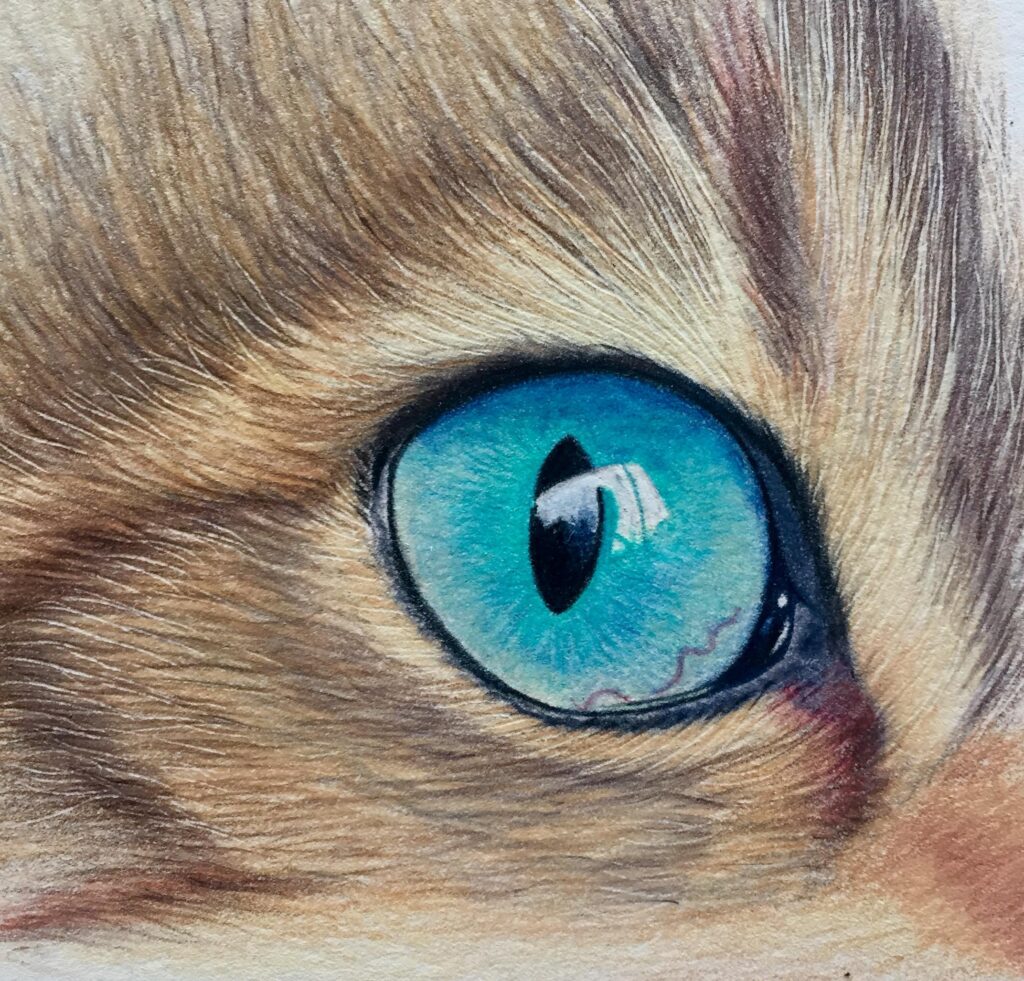
- Derwent Chromaflow pencils (available in sets & individually) specific colours used have been highlighted in bold and listed here:
| Slate Grey | Raisin | Peach Sand | Spice |
| Platinum | Red Storm | Redwood | Natural Brown |
| Deep Sea | Lavender Ash | Coffee Bean | Denim |
| White | Pastel Mint | Turquoise Green | Bondi Blue |
| Parmesan | Black | Teal | Glacier Blue |
Step 1 – Define the dark outline of the eye
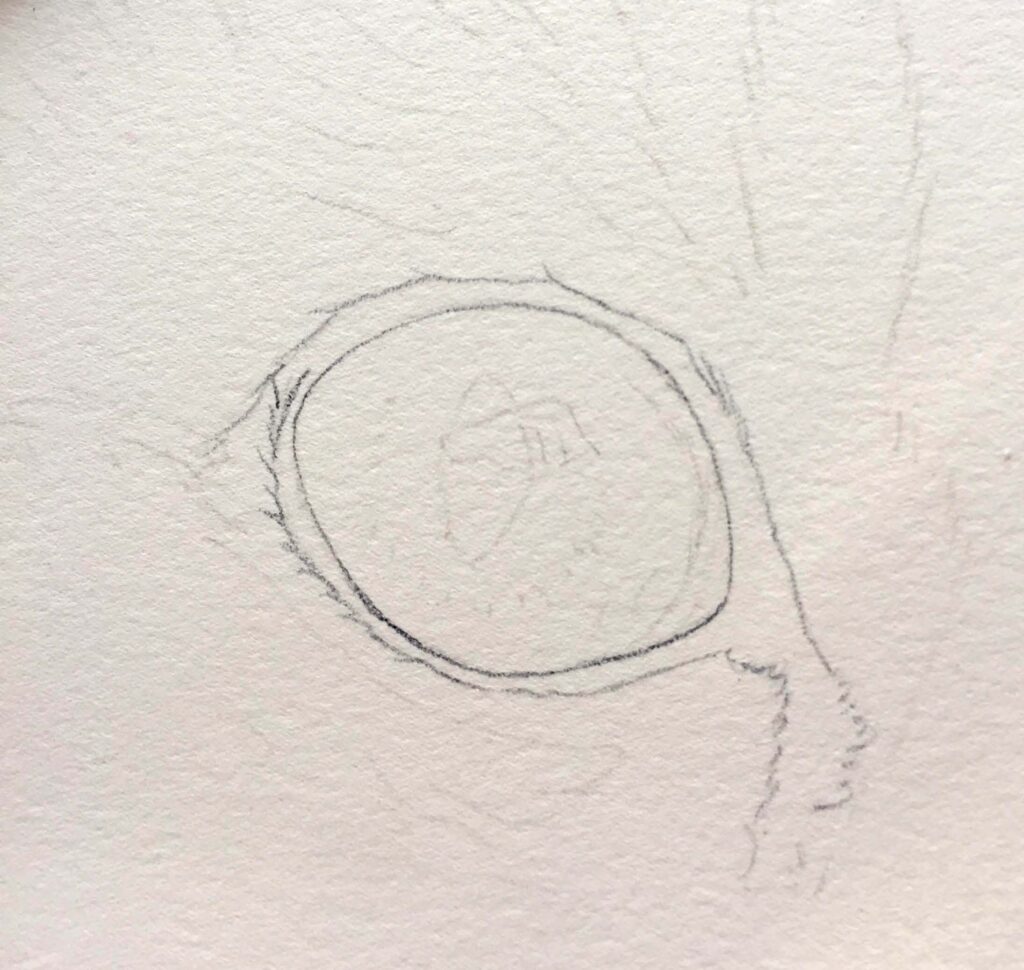
Start by roughly defining the shape of the eye and the outer rim with Slate Grey.
Step 2 – Continue to define the outside the eye
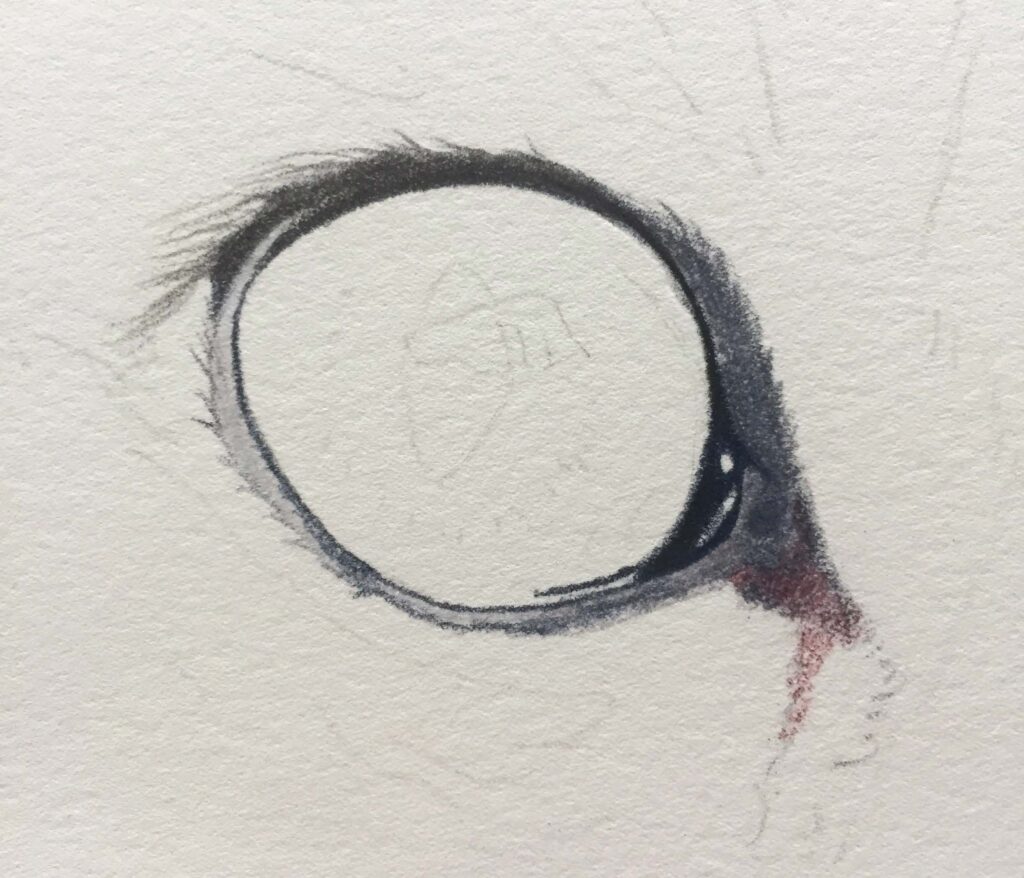
To start with, darken the whole of the inner outline with a sharp Black. Create depth to the top of the eyeball by adding a layer of Deep Sea, followed by a layer of Coffee Bean. Use small circular strokes to fill in the dark area in the inner right hand corner of the eye with a layer of Deep Sea. Follow this with a layer of Black, taking care to avoid the two areas of highlight.
Using gentle pressure and small circular strokes, apply Lavender Ash, Platinum and Red Storm to the lower left rim. As you move to the lower right hand side of the eye, start to blend in Slate Grey. Continue with the Slate Grey to fill in the outer area to the right of the eye. Use varying pressure to create the deeper areas of colour. In the outer right hand corner, gently blend in a touch of Raisin.
Use Slate Grey to outline the top of the eye, flicking the colour upwards and outwards to start to create an idea of the fur texture.
Step 3 – Define the pupil, highlight and base layers
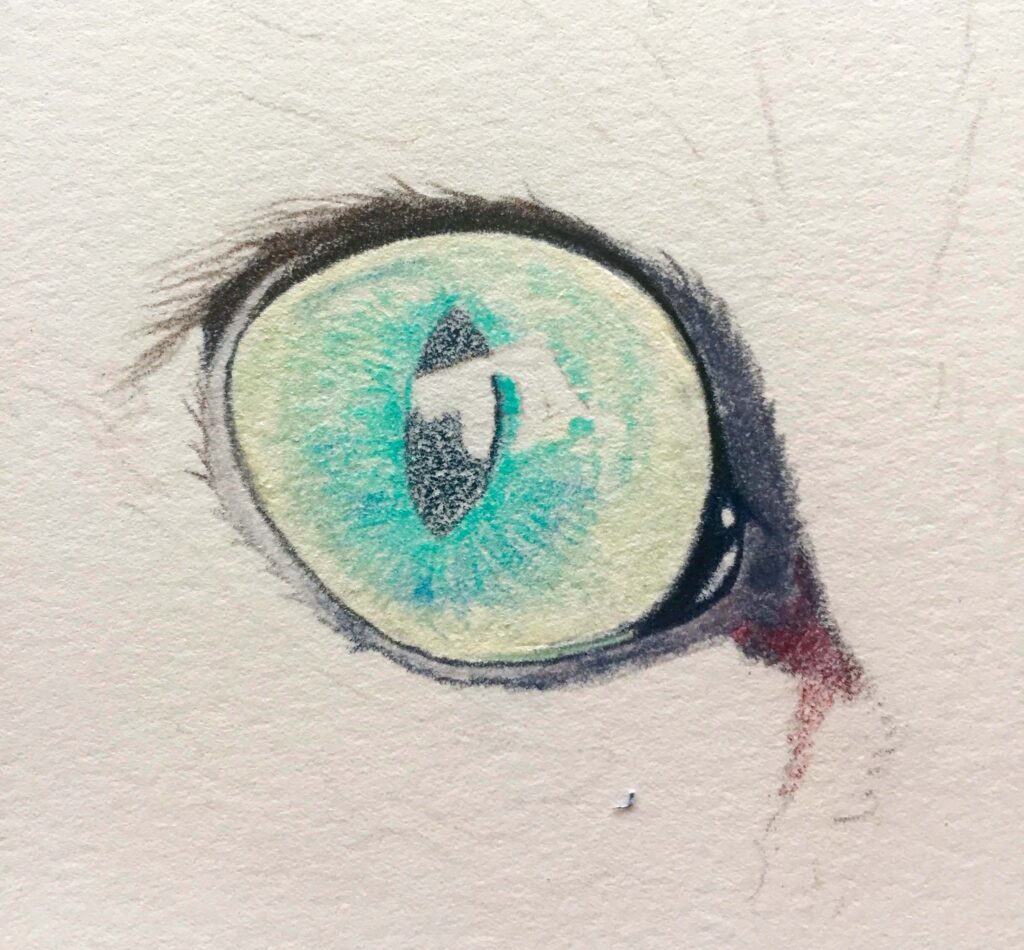
Lightly draw in the pupil using Deep Sea, outlining the highlight as you go.
Cover the rest of the eyeball with a light layer of Parmesan, using a sharp pencil and small circular strokes, leaving out the highlight area to the right of the pupil. Add a light layer of Pastel Mint to the middle section of the eye, blending it out into the Parmesan.
Next add a layer of Turquoise Green. Use straight strokes, working outwards from the pupil. For the intermittent darker areas of colour, gently work in some strokes of Bondi Blue and Teal.
Step 4 – Deepen the colours and add some details
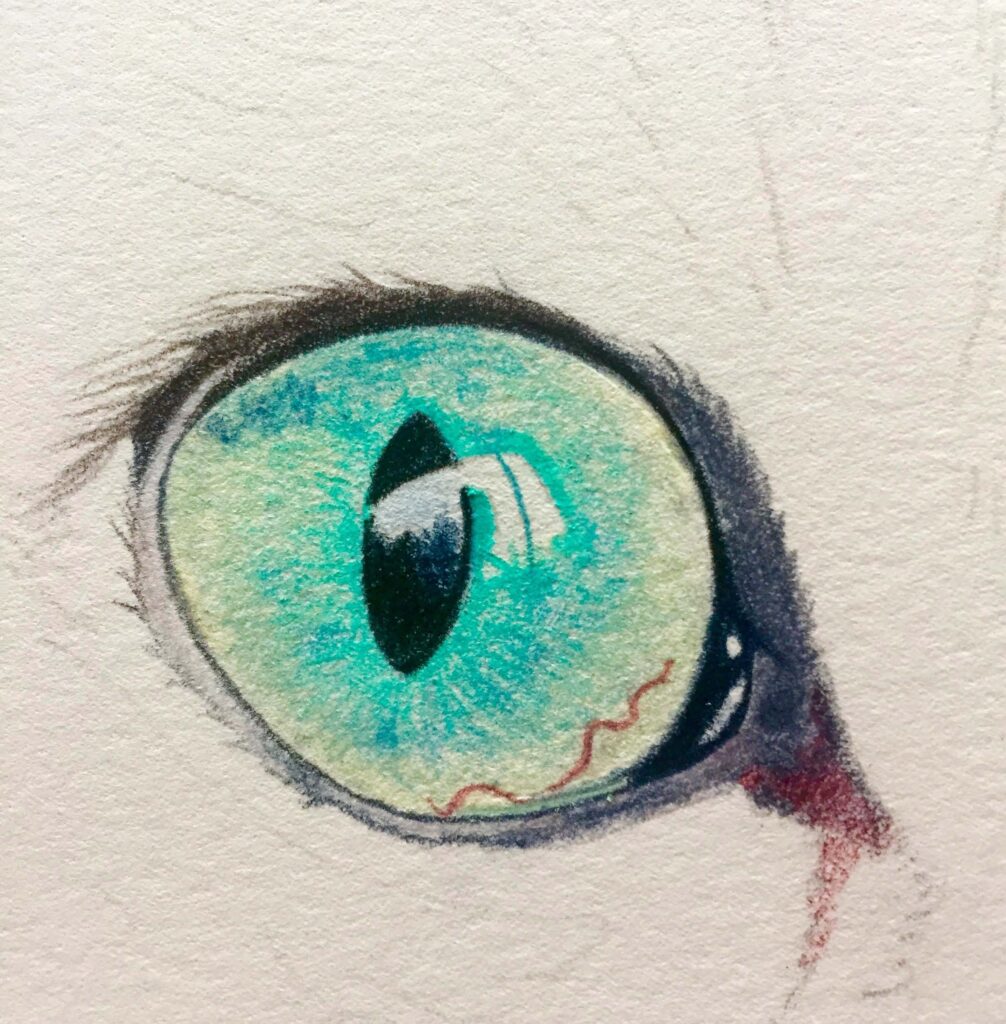
Repeat the layers of Parmesan, Pastel Mint, Turquoise Green, Bondi Blue and Teal, being careful to avoid the highlight areas.
Deepen the pupil by going over the Deep Sea with a heavy layer of Black using heavy pressure and small circular strokes. Notice that there is a lighter area in the middle of the pupil. Carefully form this with a layer of Deep Sea to create a ‘tree’ shape, blending it into the Black.
Start to define the shadow at the top of the eye by adding in a layer of Denim, and create the wiggly vein at the bottom of the eye using Raisin.
Step 5 – Create depth and shadow
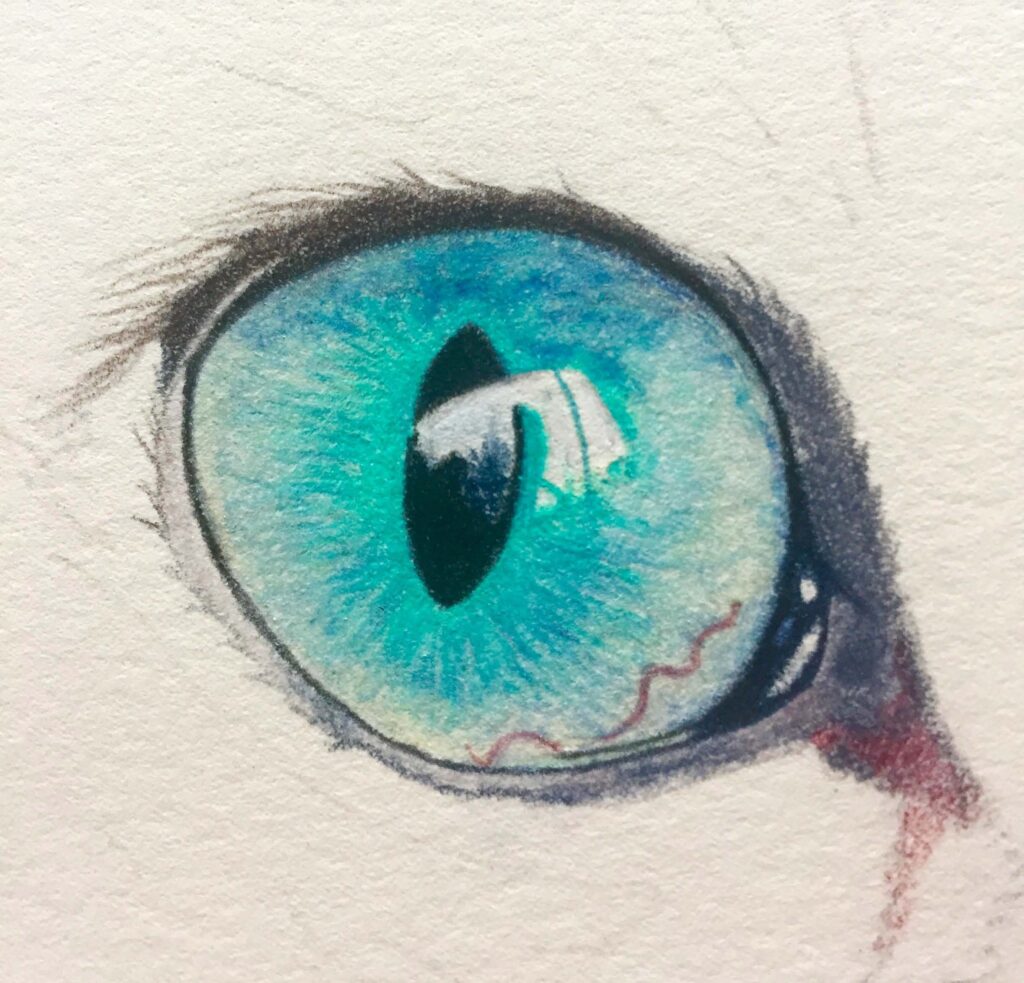
Add further layers of Pastel Mint, Turquoise Green, Bondi Blue and Teal to the centre of the eye, ‘pulling’ the colour from the centre outwards. Continue to blend in Denim at the top of the eye to create the area of shadow.
Add a light touch of Glacier Blue to the highlight in the pupil area and a light touch of Pastel Mint to the rest of the highlight. Brighten the small highlights in the inner corner with White.
Step 6 – Blend
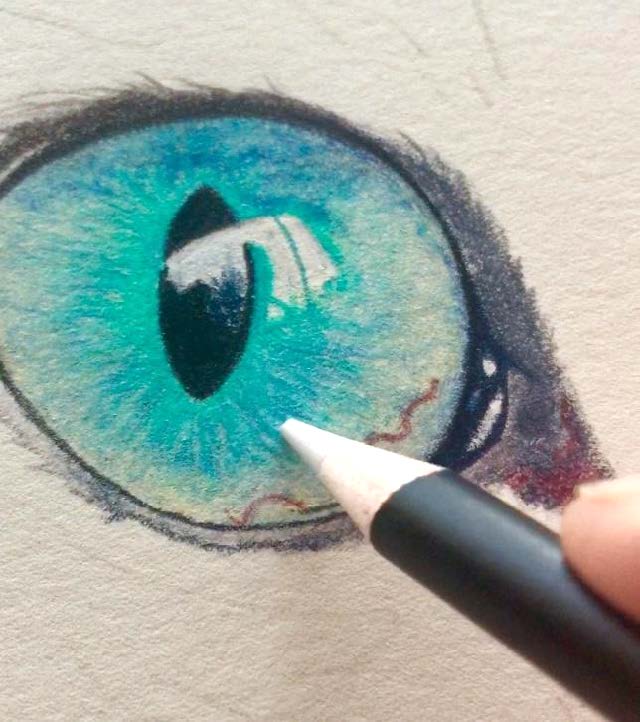
Using White, blend the layers together by using medium pressure to ‘push’ the colours together from the centre outwards. Work around the eye in a clockwise or anti-clockwise direction, avoiding the pupil and highlight areas.
Step 7 – Start to create fur around the eye
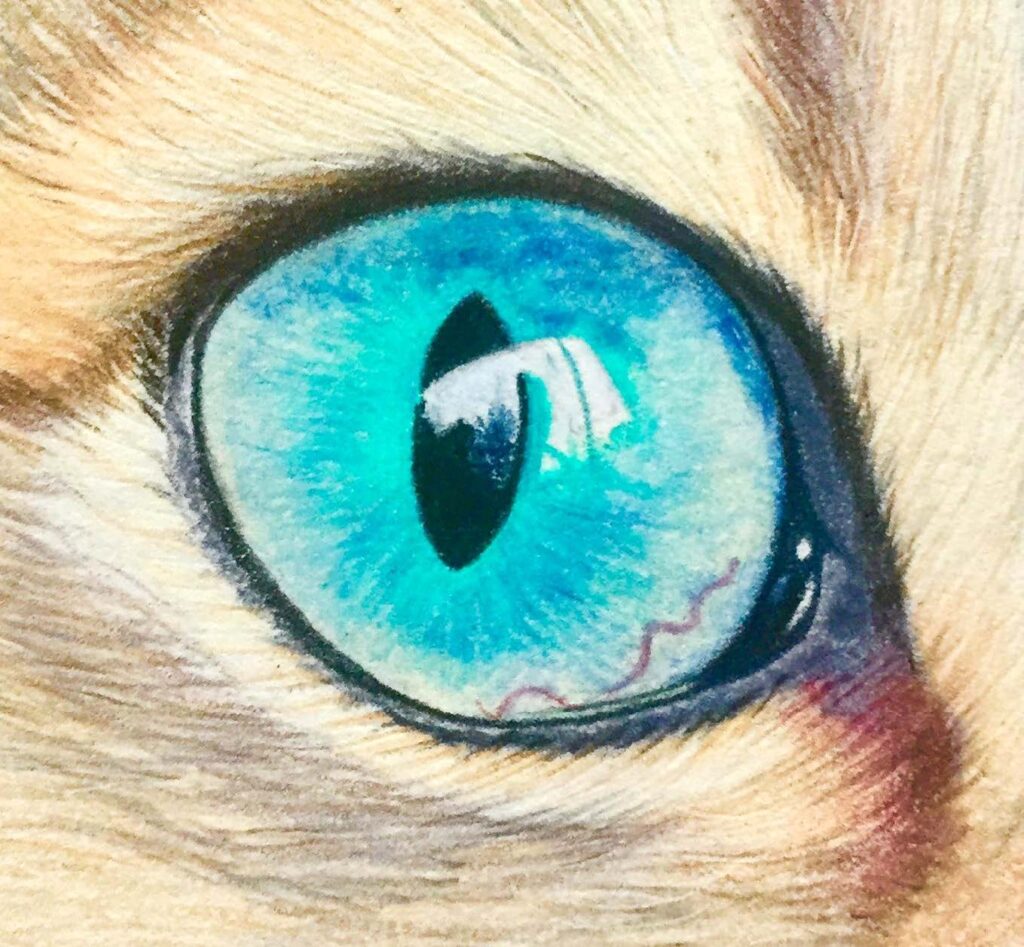
Work around the eye, from the rim of the eye outwards to create directional fur strokes.
Start with a base layer of Parmesan, then use a fine embossing tool to lay down some directional hair strokes. These will not be very visible at this stage but will create some lovely texture once further layers of colour have been added.
Next, map out some darker areas using Spice and Natural Brown. Use a black pencil and light flicking strokes to gently work the outer rim of the eye into the surrounding fur.
Step 8 – Complete the fur and deepen the eye
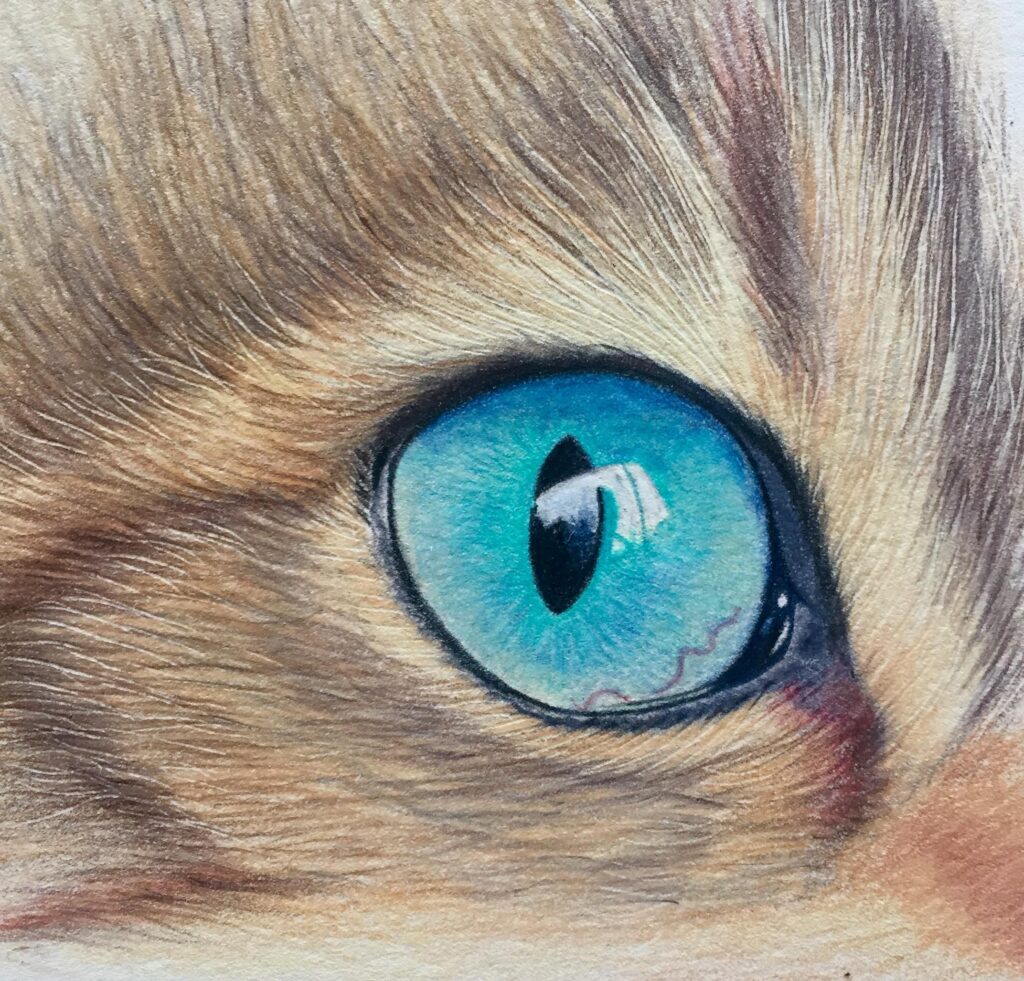
Continue to add depth by building layers of Peach Sand, Spice, Redwood, Natural Brown and Coffee Bean to create a variety of fur tones around the eye. Use medium pressure and use short, flicking, strokes, paying attention to the direction of the fur. As you build the layers, the embossed areas will come to life. They create the impression of fine, light hairs, which will add a satisfying touch of realism to your piece.
After completing the fur, go back to the eye and continue to darken the shadow with Denim. Blend in further layers of Turquoise Green, Bondi Blue and Teal, working from the pupil outwards to create the variegated middle section.
Finally, blend the colours of the eye together with a layer of Glacier Blue to create a lovely glossy sheen.
If you’ve enjoyed this tutorial you might be interested in these blog posts Derwent Chromaflow and our coloured pencil ranges. Rosie Wallace has produced this tutorial as part of our in depth look at Derwent’s pencil range. If you’ve enjoyed this tutorial, keep an eye out for Rosie’s other tutorials next year.
Rosie Wallace has been creating coloured pencil artwork since July 2020, after initially dabbling in pen and ink sketches during the first Covid-19 lockdown. Since then, Rosie has spent hundreds of hours developing her skills and experimenting with different surfaces, techniques and pencil types. Rosie’s favourite subjects are animals and she strives to capture the essence of each subject’s character, to create images full of warmth, charm and personality. Rosie is a member of the UK Coloured Pencil Society and has had artwork published in Ann Kullberg’s ‘Color’ magazine.
You can stay in touch with Rosie Wallace on instagram and her facebook page

